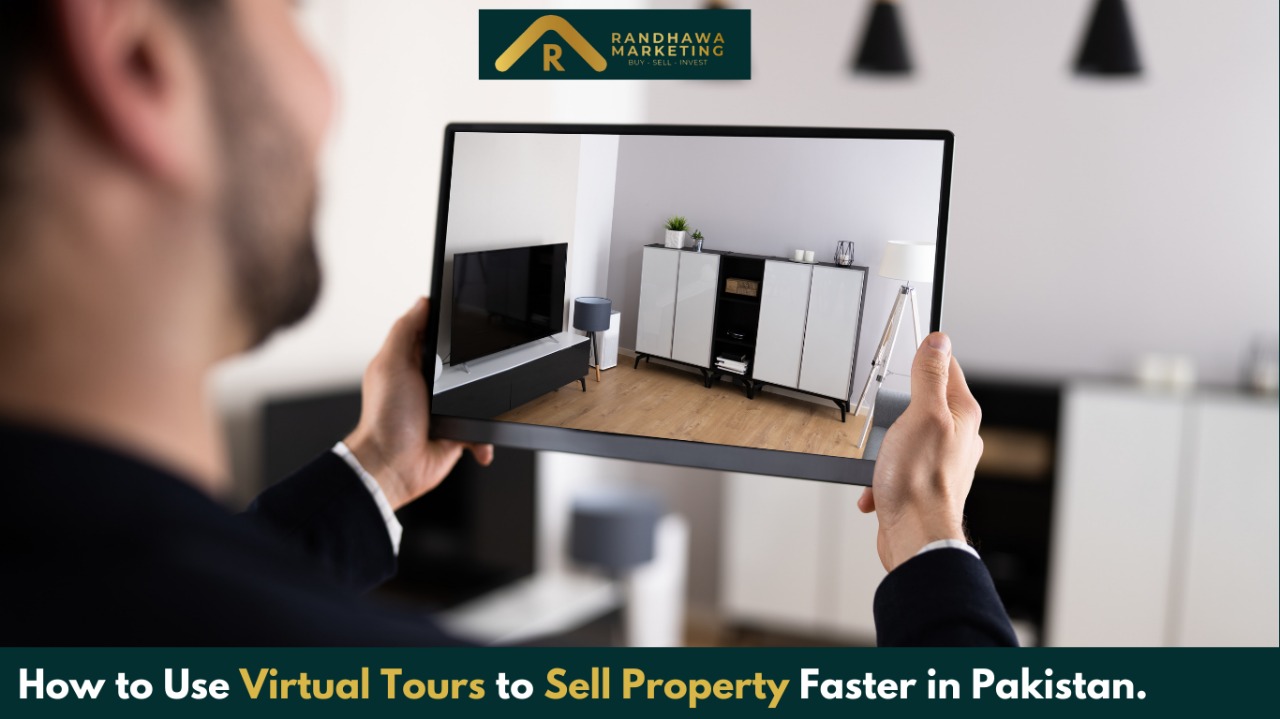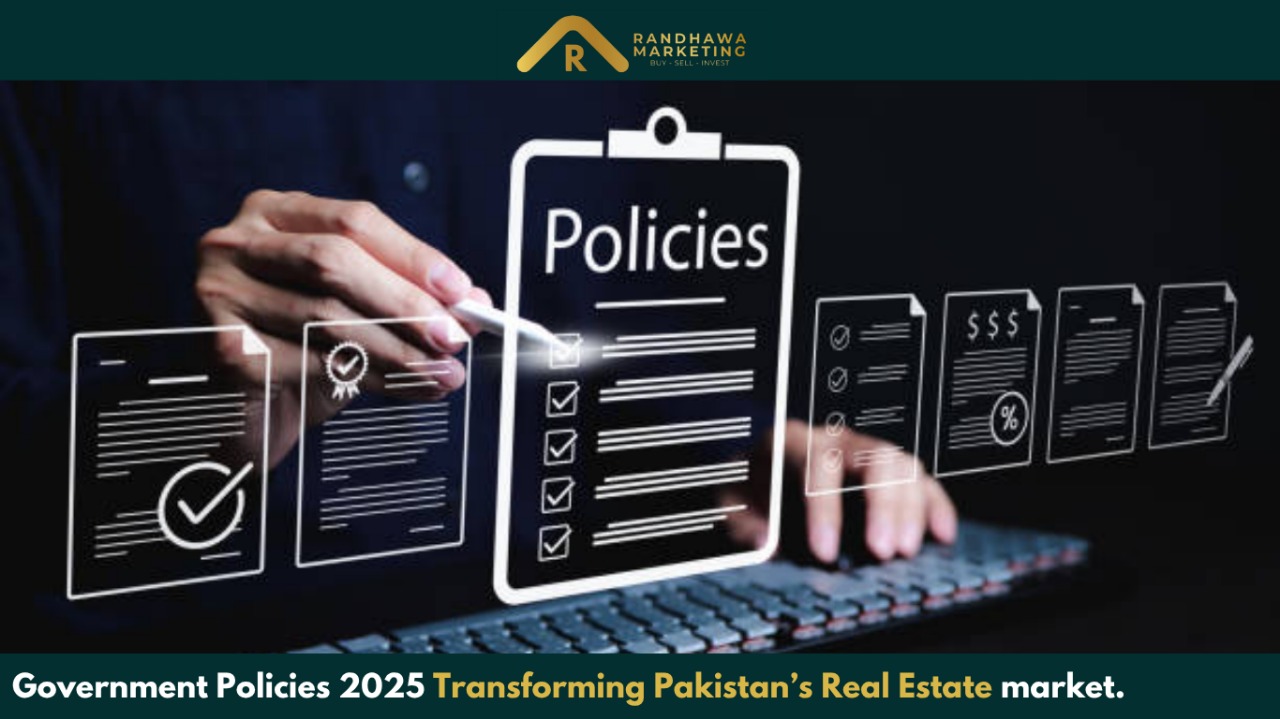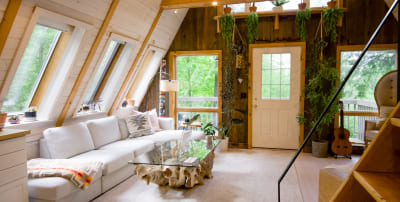
How to Use Virtual Tours to
Sell Property Faster in Pakistan
The real estate market in
Pakistan is becoming more digital with every passing year. Buyers no longer
rely only on photos or brochures. They expect a full experience before deciding
to visit a property in person. Virtual tours give them that experience. A 360°
view of the property helps buyers explore every corner from the comfort of
their phone or laptop.
This convenience saves time for
both buyers and sellers. Buyers can quickly shortlist properties without
traveling, while sellers filter out casual visitors and deal only with serious
clients. Virtual tours also build trust. A well-made tour shows that the seller
has nothing to hide and is confident in the property’s value.
Virtual
tours are changing the way real estate works in Pakistan. Instead of relying
only on photos or physical visits, you can now show your property in full
detail online. Buyers can see every angle of a house or apartment, explore
rooms one by one, and get a clear sense of space without leaving their homes.
This saves time for both agents and buyers, and it helps properties sell
faster.
Why Virtual Tours
Work in Pakistan
Buyers
get a complete view of the property before visiting.
Overseas
Pakistanis can explore properties from abroad.
Serious
buyers shortlist faster, reducing unnecessary site visits.
Virtual
tours make listings stand out on crowded portals.
Transparent
presentation builds trust and increases conversions.
How to Use
Virtual Tours Effectively
Prepare
the property. Clean, stage, and light spaces properly.
Invest
in high-quality video or hire professional tour creators.
Combine
tours with photos, drone shots, and floor plans for more impact.
Share
tours across listing sites, social media, and WhatsApp.
Highlight
“Virtual Tour Available” in listing titles to draw attention.
Focus
on overseas clients who depend on remote property exploration.
Follow
up with live video calls for serious buyers.
Virtual tours are no longer just
an extra feature. They are a practical way to speed up sales in Pakistan’s real
estate market. If you use them with the right tools and platforms, you can
attract more serious buyers, reduce wasted time, and close deals faster.
How to Get the
Most Out of Virtual Tours
Virtual
tours work best when they are planned and executed with care. A rushed or low-quality
tour can turn buyers away, but a well-prepared one can make your listing stand
out and attract serious interest. Here is how you can maximize the value of
your virtual tours:
Invest in quality
Use high-resolution cameras and stable equipment, or hire professional service
providers. Blurry or shaky videos reduce buyer interest, while clear visuals
give a strong impression.
Prepare the property
Make sure the space is clean, well-lit, and staged before recording. Open
curtains, switch on lights, and remove clutter. A bright and tidy home looks
more appealing in a virtual tour.
Offer multiple viewing options
Do not rely on the tour alone. Add supporting content like high-quality photos,
detailed floor plans, and drone footage of the exterior or neighborhood. This
gives buyers a complete picture of the property.
Promote across all platforms
Upload your tours on property portals such as Zameen , Graana and Randhawa
Marketing share them on Facebook, Instagram, and YouTube, and send them
directly via WhatsApp. The more exposure your tour gets, the faster it will
attract buyers.
Highlight the feature in listings
Always mention “Virtual Tour Available” in your ads and titles. This makes your
property stand out and signals buyers that they can explore it right away.
Focus on overseas clients
Many Pakistanis living abroad rely on online tools to make property decisions.
Virtual tours give them confidence to shortlist properties without traveling,
which increases your chances of securing a sale.
Cost and Budget
Options
Not
every virtual tour has to be expensive. There are different levels of tours
available, and you can choose one based on your budget and the type of property
you are marketing. For smaller listings, a simple 360° photo walk-through is
often enough. These tours are affordable, quick to produce, and still give
buyers a clear idea of the layout.
For
high-value properties or large projects, you can invest in premium VR setups
that include interactive floor plans, dollhouse views, and drone footage. These
advanced options cost more but create a strong impact and are more likely to
attract serious buyers.
This
flexibility means that even small agents or individual sellers can start using
virtual tours without heavy investment, while developers and large agencies can
go for full-scale VR experiences to stand out in the market.
Integration with
Marketing Campaigns
A
virtual tour should not stay limited to a property portal listing. You can use
it as part of a wider marketing strategy to reach more potential buyers. Tours
can be embedded directly into your agency’s website, giving visitors an
immediate way to explore listings. They can also be added to email campaigns,
where a single click takes the buyer into a 360° view of the property.
Digital
ads on platforms like Facebook, Instagram, and Google allow you to promote
properties with interactive content. Including a virtual tour link or short
preview video in these ads makes them more engaging and increases the chances
of getting quality leads.
By
combining virtual tours with your other marketing efforts, you create multiple touch
points for buyers. This broader exposure ensures that your listing is seen,
explored, and remembered, which speeds up the sales process.
Analytics and
Buyer Insights
Many
modern virtual tour platforms provide built-in analytics that go beyond simple
view counts. These tools show how buyers interact with a property tour. You can
see how much time a viewer spends inside the tour, which rooms or spaces
attract the most attention, and at what point they lose interest or exit.
This
information is valuable for agents and sellers. If you notice that viewers
spend more time in the living room and kitchen, you can highlight those
features in your follow-up communication. If buyers consistently drop off
before reaching certain areas, it may signal that those parts of the property
need better staging, lighting, or presentation.
By
using these insights, you can focus on the most interested leads, adjust your
property presentation, and refine your marketing strategy. Instead of guessing
what buyers want, you respond with data, which increases the chances of turning
interest into a sale.
Challenges and
Solutions
While
virtual tours are highly effective, there are some challenges in the Pakistani
market that sellers and agents need to keep in mind. One major issue is
internet speed. Many buyers, especially those in smaller cities, may struggle
to load heavy 3D or 360° tours smoothly. To overcome this, you can offer
lighter versions of the tour, such as compressed video walk-throughs or
lower-resolution formats that still show the property clearly without long
loading times.
Another
challenge is device compatibility. A large number of buyers in Pakistan access
listings through their smartphones rather than desktops. This makes it important
to ensure that your virtual tours are mobile-friendly. Choosing platforms that
optimize tours for mobile viewing will prevent buyers from dropping off due to
technical difficulties.
By
addressing these challenges with simple solutions like lighter video files and
mobile-ready formats, you can make your tours accessible to a wider audience.
This ensures that technical barriers do not stop interested buyers from
exploring your property.
Future Trends
Virtual
tours are evolving quickly, and the next phase will make them even more
powerful for real estate marketing in Pakistan. With the use of artificial
intelligence, tours will be able to personalize the experience for each buyer.
For example, AI can highlight features based on a buyer’s preferences, such as
focusing more on the kitchen for a family-oriented client or showcasing office
space for someone working remotely.
Augmented
reality is also becoming part of property viewing. Buyers will be able to use
their phones or VR headsets to place virtual furniture inside a space, change
wall colors, or see how different layouts would look in real life. This makes
it easier for them to imagine living in the property.
Smart
home integration will add another layer of interactivity. Buyers could explore
a home virtually and test features like lighting, temperature control, or
security systems, giving them a real sense of how the property functions.
These
advancements will move virtual tours from being simple visual tools to becoming
immersive experiences that bring buyers closer to making decisions without ever
setting foot inside the property.
FINAL THOUGHS
Virtual
tours are reshaping how real estate is marketed and sold in Pakistan. They have
moved from being an optional add-on to becoming a powerful sales tool that every
serious agent and developer should use. By allowing buyers to explore every
angle of a property online, they save time, reduce unnecessary site visits, and
create trust through transparency. This makes the sales process faster and more
efficient for both sellers and buyers. The good news is that virtual tours are
flexible and can fit different budgets. Simple 360° photo tours are affordable
and effective for small listings, while advanced VR setups with drone shots,
interactive layouts, and dollhouse views are ideal for premium properties. By
embedding these tours into property portals, agency websites, social media ads,
and email campaigns, you can reach a much larger audience and generate stronger
engagement.
Another
advantage is data. Some platforms provide analytics that show how long buyers
spend in a tour, which rooms catch their attention, and where they lose
interest. These insights help you identify serious leads and adjust your
marketing strategy based on real buyer behavior. Of course, challenges exist,
such as internet speed and mobile compatibility, but they are easy to manage
with lighter video formats and mobile-ready versions. Looking ahead, the future
of virtual tours is even more promising. With AI, AR, and smart home
integration, buyers will soon be able to customize spaces virtually, test
features, and truly imagine themselves living in the property.
In today’s competitive property market, relying on photos alone is no longer enough. Virtual tours give you an edge, helping you attract serious buyers, reduce wasted effort, and close deals more quickly. For anyone selling property in Pakistan, they are no longer just a trend but a necessity.


